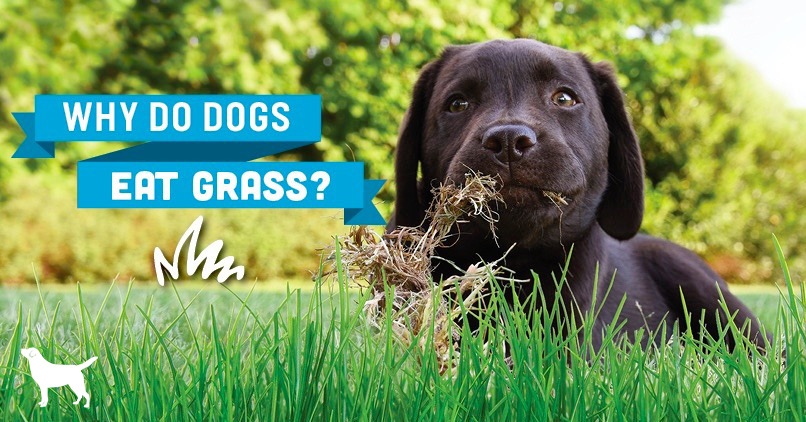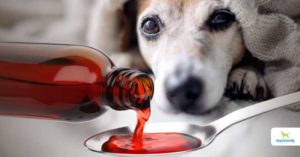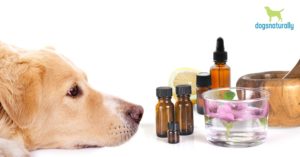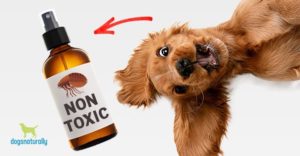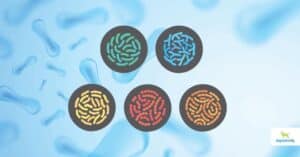Have you ever asked why dogs eat grass?
It’s a common question – and chances are your dog has eaten it at some point.
There are a few reasons dogs eat grass but one is because they need more nutrients … or one specific nutrient. And that’s chlorophyll.
But even though grass has chlorophyll in it … it’s best used for lawn decoration and not as a food source.
So today I’ll talk about why your dog may be on the hunt for chlorophyll … and how he can get a healthy dose of it.
The Health Benefits Of Chlorophyll For Dogs
Your dog’s desire to eat grass isn’t as weird as you may think.
Chlorophyll is a green pigment found in almost all plants and algae.
It’s an important compound in plant photosynthesis. It’s what allows plants to absorb energy from light.
What’s really neat is … the structure of chlorophyll is almost identical to hemoglobin.
Hemoglobin is a component in your dog’s red blood cells. It helps carry oxygen to all your dog’s organs and cells.
The difference between hemoglobin and chlorophyll is only one atom … the central molecule in hemoglobin is iron. In chlorophyll the central molecule is magnesium.
So when your dog eats chlorophyll, it replenishes his red blood cells.
Chlorophyll also helps the body in other ways. It …
- Cleanses the body’s cells.
- Fights infections.
- Heals wounds.
- Boosts the immune system.
- Detoxes all systems … particularly the liver and the digestive system.
- Promotes digestive health … which is why many dogs with acute digestive problems go for the grass.
- Increases oxygen use.
- Helps break down calcium oxalate stones in the bladder.
- Reduces the ability of carcinogens to bind with DNA in the liver and other organs.
Chlorophyll-rich foods are also a great way to treat and prevent bad breath in your dog.
Chlorophyll can get rid of odors in the mouth and it helps with digestion … and with better digestion comes better breath too!
Parsley is a great choice for fresher breath!
Chlorophyll Fights Cell Damage And Cancer
We live in a pretty toxic world these days. And that leads to cell damage and premature aging.
This damage leaves your dog’s vital organs unable to repair themselves … so they don’t work as well as they used to.
The good news is you can feed your dog fresh greens to help.
In fact, a study found that chlorophyll blocks procarcinogens. Substances like aflatoxins that damage DNA.
And the Linus Pauling Institute’s Cancer Chemoprotection Program studied chlorophyll. It’s now considered part of a complete nutrition plan to fight and prevent cancer.
One of the reasons it works so well to prevent cancer and disease is because it binds well to toxic heavy metals. The kidneys then eliminate the heavy metals before they can cause organ damage.
Related: Heavy Metal Detox For Dogs: Why It’s Important!
The Problem With Grass
Most dogs who eat grass do it because they have no other source of fresh green plants.
Wild dogs and cats get their chlorophyll from the intestines of their prey. They also have a plethora of healthy wild plants to nibble on.
But you may have noticed the grass your dog eats usually comes out the way it did when it went in. That’s because your dog can’t digest the grass. And that means he doesn’t get much of what he seeks … chlorophyll.
And lack of digestibility isn’t even the biggest issue.
You may keep your grass fresh and clean at home. But many of your neighbors and local parks may treat their grass with chemicals.
And these lawn chemicals cause cancer in dogs.
How To Feed Your Dog More Chlorophyll
The good news is you can provide your dog with digestible, healthy chlorophyll.
One easy way to do this is to cut up 1 cup of green vegetables like the ones below …
- Spinach
- Kale
- Broccoli
- Parsley
- Chinese cabbage
You can also juice them (feed the pulp too) or steam them lightly.
Once you have your greens ready, add them directly to your dog’s meal. If your dog is a bit leery you can also mix them with other foods like …
You can also get sneaky with treat toys, or even ice cube trays for a yummy frozen treat.
Don’t Forget The Other Colored Vegetables
So now you know that when your dog grazes in your backyard, it’s time to add some greens to his meals.
But greens aren’t the only plants that provide special health benefits for your dog.
In fact, there’s a rainbow of colorful foods with many health benefits.
Fresh fruits and vegetables can be an important addition to your dog’s diet. They’re chock full of healthy nutrients.
When you feed your dog vegetables, he also gets the benefit of phytonutrients.
Phytonutrients are organic compounds in plants. They help to both prevent and relieve disease and illness.
The colors show the kind of phytonutrients they contain. They each work in different ways and have different functions.
To give your dog a wide range of different phytonutrients … you’ll want to add variety within the color groups.
Most dogs love broccoli stems and chew them like a bone … and they can even eat them raw.
You can also feed apples and blueberries raw.
Be careful with carrots as they are higher in sugars … and dogs don’t digest them well raw. I usually grate or steam them first.
Chlorophyll For Dogs
I hope you’re now a little more confident in your dog’s nutritional intuition … and about why some dogs eat grass more than others. They need chlorophyll!
Greens and other fruits and veggies are a vital part of your dog’s diet. So top off his dish with these nutrient rich foods whenever you can.

